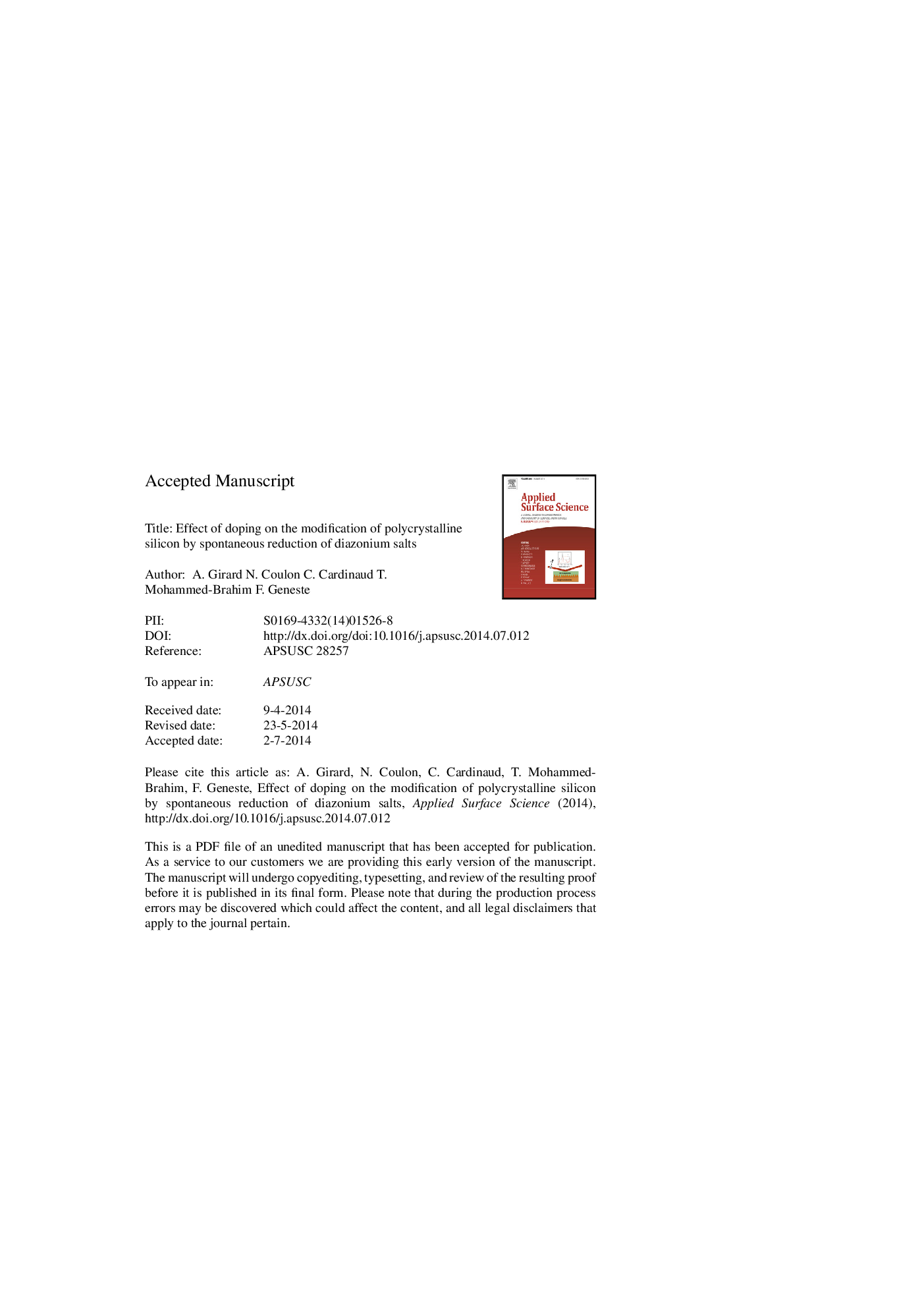| Article ID | Journal | Published Year | Pages | File Type |
|---|---|---|---|---|
| 5358370 | Applied Surface Science | 2014 | 22 Pages |
Abstract
The chemical modification of doped polycrystalline silicon materials (N+, N++ and P++) and silicon (1Â 0Â 0) and (1Â 1Â 1) used as references is investigated by spontaneous reduction of diazonium salts. The effectiveness of the grafting process on all polySi surfaces is shown by AFM and XPS analyses. The effect of substrate doping on the efficiency of the electrografting process is compared by using the thicknesses of the deposited organic films. For a better accuracy, two methods are used to estimate the thicknesses: XPS and the coupling of a O2 plasma etching with AFM measurement. Structural characteristics of the poly-Si films were investigated by Scanning Electron Microscopy and X-ray diffraction to find a correlation between the structure of the material and its reactivity. Different parameters that could have an impact on the efficiency of the grafting procedure are discussed. The observed differences between differently doped silicon surfaces is rather limited, this is in agreement with the radical character of the reacting species.
Keywords
Related Topics
Physical Sciences and Engineering
Chemistry
Physical and Theoretical Chemistry
Authors
A. Girard, N. Coulon, C. Cardinaud, T. Mohammed-Brahim, F. Geneste,
